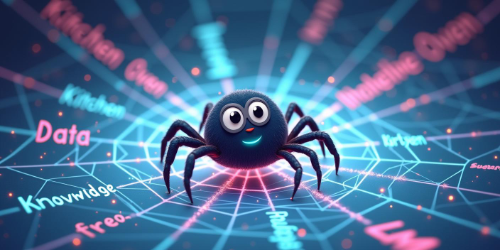Large Language Models (LLMs)
Large Language Models (LLMs) are advanced AI that understand and generate human language, acting as knowledgeable digital assistants.

Sid our Super Intelligent Spider has mastered LLMs
Large Language Models (LLMs) are a class of artificial intelligence models designed to understand, generate, and interact with human language. They function like a multilingual expert who has not only read millions of books but they can quickly recall and apply that knowledge. They have a deep understanding of grammar, style, and context—so you can rely on them to draft, edit, or summarise text in almost any subject.
They have been trained on extensive text data, which enables them to understand context, generate relevant responses, and adapt their communication style to fit different situations.
Characteristics & Considerations
- Technical Speak: LLMs are neural networks, often based on transformer architecture. They have millions to billions of parameters which allow for complex understanding of human language.
- Data Privacy and Security: Like any system handling sensitive information, proper safeguards must be in place. Its like having a highly capable employee who needs appropriate security clearance and training.
- Applications : Content Creation such as writing articles, generating marketing copy and creative writing. Customer support such as chatbots or automated email replies. With Research such as literature reviews and hypothesis generation.
- Quality Control: LLMs can sometimes generate incorrect or biased content. Implementing human oversight and verification processes is crucial, similar to having an editor review important communications.
How do LLMs work?
Imagine a super intelligent spider called Sid that has read every book and website in the world. Instead of a traditional two-dimensional (2D) web, Sid spins a multi-dimensional web of connections between words.
- Words as Nodes: Each word is a node represented as an intersection of other threads.
- Connections as Threads: The strength of the connection (how closely related the words are) represented by the thickness of the thread.
- Distances as Meaning: The distance between two words on the web reflects their relationship. Words that are closely related (like “kitchen” and “oven”) are closer together on the web.
How Sid Answers Questions
When you ask Sid, What appliances are used in a modern kitchen, it essentially does the following:
Finds the Starting Point: It locates the word or concept you’re asking about on its web, lets say he starts with the word Kitchen.
Explores the Connections: It then explores the connections (threads) radiating outward from that word, considering the strength (thread thickness) of each connection, he finds words like Oven, Spoon, Food etc.
Contextual Awareness: Because Sids is a Super Spider he sees that word Oven is also has connection to word Appliance but sees word Airfryer is connected to Appliance and Modern.
Predicts the Next Word: Based on the pattern of connections and the strength of those connections, Sid predicts the most likely next word or phrase in the sequence might best using the word Airfryer over Oven.
Summary
Large Language Models represent a transformative technology in business communications and operations.
Sid our super spider can mimic human language patterns, but it doesn’t truly understand the meaning behind the words.